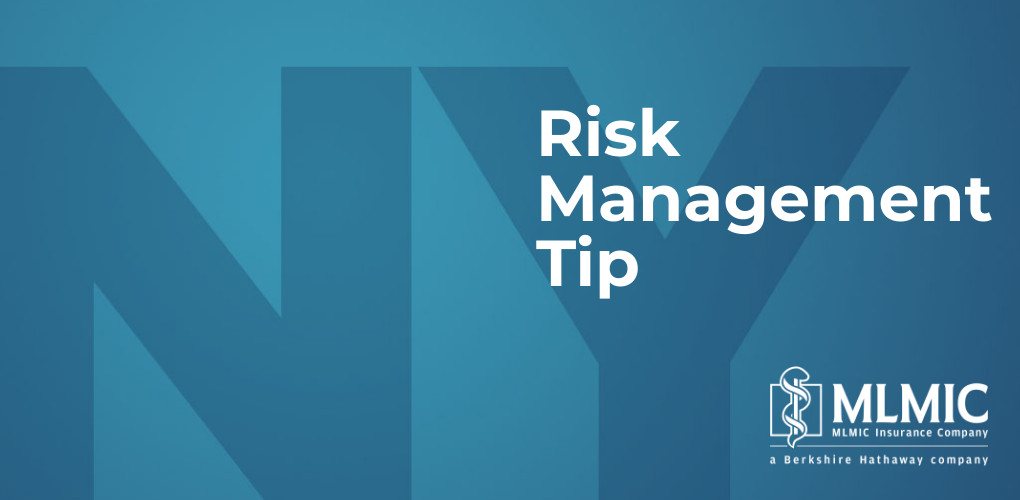
MLMIC Risk Management Tip #29 addresses medical professional liability risks related to “Documentation Considerations for Open Notes” in electronic health records (EHRs).
The Risk
The 21st Century Cures Act was enacted, in part, to increase communication among healthcare providers and remove some of the barriers patients face when trying to obtain their health information. To accomplish this, the Act affords both providers and patients greater access to more complete patient histories and empowers patients to become more engaged in their healthcare decisions. This improved patient engagement allows providers the opportunity to improve documentation accuracy, enhance patient safety, increase patient compliance, develop stronger patient relationships, improve efficiency of care and enhance the overall patient experience.
Considering increased patient access to their health information, the following strategies can help your patients better understand their records, become active participants in their healthcare and create stronger physician-patient relationships.
Recommendations for Managing Open Notes in the EHR
- Confirm with your EHR system vendor that all required information can be accessed by your patients and review how that information will appear on their screens.
- Understand and maximize the format and function of your EHR. For example, ensure applications, such as portal access, spell check and reminder notifications, are functioning properly.
- Consider the health literacy level of your patient. Use plain language in your documentation whenever possible:
- Avoid the use of jargon.
- Define medical terms when possible. Consider providing a list of terms and abbreviations frequently used in your documentation.
- Remember that how you document an encounter can have an effect on your patient. Consider the following in your documentation:
- Be careful to not sound judgmental in your notes. Avoid terms that may be offensive or emotionally charged. For example, document “Patient reports s/he did not the take medications” vs. “noncompliant” or “unreliable.”
- Use objective measures like BMI vs. “obese” or “overweight.”
- Be careful using abbreviations. For example, “[Patient] is ‘SOB’.”
- Use a supportive tone when possible: “Lost five pounds and is motivated to continue” vs. “Still needs to lose another 15 pounds.”
- Document as though you are writing instructions: “Weigh yourself every morning” vs. “Patient needs to monitor weight.”
- Avoid using the copy and paste feature of your electronic record system. The information copied and pasted may be redundant, outdated or inaccurate and could create the wrong perception about your records.
- Engage your patients and solicit feedback from them:
- Consider dictating or typing notes with the patient present; talk during the visit about what you are documenting.
- Encourage your patients to refer to the notes as this may help increase compliance with the treatment plan.
- Ensure that your practice has the resources in place to support increased patient engagement. Have written policies and procedures to address:
- how patients and their representative can access their health information;
- the confidentiality of minors’ information; and
- how to address patient comments or questions about the documentation of their encounter.
- Provide educational information to patients on open notes:
- Implement practice policies that address questions on patient access.
- Increase communication and access through media such as:
- email;
- the patient portal;
- your website;
- social media; and
- information sheets and/or flyers in the office.
This MLMIC Risk Management Tip is available here as a PDF: “Documentation Considerations for Open Notes.“


